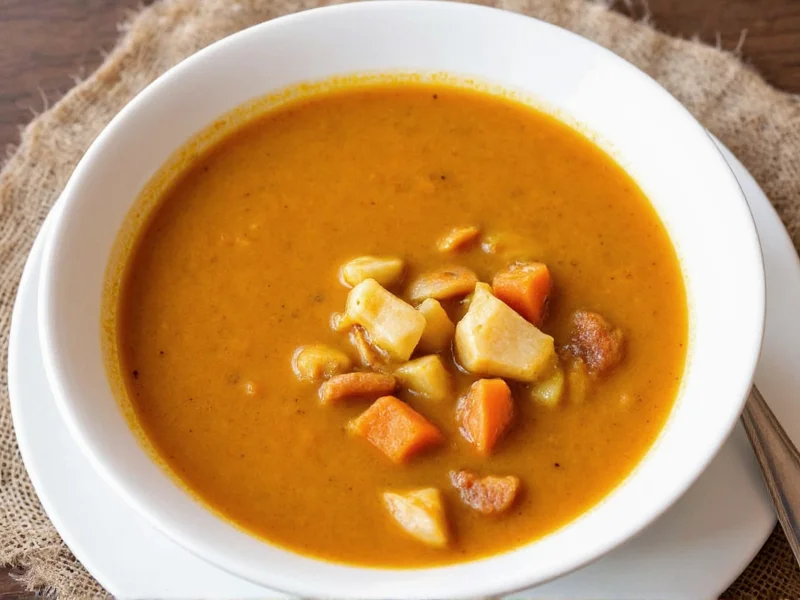Diverticulitis requires careful dietary management, especially during flare-ups when inflammation makes digestion difficult. Modern medical guidelines have evolved significantly from the strict low-fiber diets of the past, but proper soup selection remains crucial during different phases of the condition.
Understanding Diverticulitis and Dietary Needs
Diverticulitis occurs when small pouches in the colon wall become inflamed or infected. During acute flare-ups, your digestive system needs rest, making liquid and soft foods essential. The dietary approach has three distinct phases: acute flare-up, recovery, and maintenance. Each phase requires different soup options to support healing without aggravating symptoms.
Soups for Acute Diverticulitis Flare-Ups
During the initial 2-3 days of a diverticulitis flare-up, doctors typically recommend a clear liquid diet to give your digestive system complete rest. This phase focuses on hydration and electrolyte balance while minimizing digestive activity.
Acceptable clear liquid soups include:
- Clear chicken broth (fat skimmed)
- Beef broth (low sodium)
- Vegetable broth (strained, no pulp)
- Miso soup (without tofu or seaweed)
These best soups for diverticulitis flare up provide essential nutrients without requiring significant digestive effort. Avoid any soups containing particles, even small vegetable pieces, as these can irritate inflamed diverticula.
Transitioning to Full Liquid Diet
As symptoms improve (usually after 2-3 days), you can progress to a full liquid diet that includes thicker, pureed soups. This phase typically lasts 3-5 days before introducing soft solid foods.
| Soup Type | Safe During Flare-Up | Safe in Remission | Notes |
|---|---|---|---|
| Clear broth | ✓ | ✓ | Essential during acute phase |
| Pureed butternut squash | ✓ | ✓ | Remove skin for flare-ups |
| Tomato soup (smooth) | ✓ | ✓ | Avoid seeded varieties |
| Minestrone | ✗ | ✓ | Only in remission with soft vegetables |
| Lentil soup | ✗ | ✓ | High fiber - wait until fully recovered |
Excellent low fiber soups for diverticulitis during this transitional phase include smooth butternut squash soup, pureed carrot soup, and well-strained tomato soup. When preparing these, ensure no seeds, skins, or chunks remain. Homemade versions give you complete control over ingredients, but store-bought options can work if carefully selected.
Reading Labels for Store-Bought Soups
When choosing commercial soups, scrutinize labels for:
- Fiber content (aim for less than 2g per serving during flare-ups)
- Added seeds or nuts (common in some ethnic soups)
- Large vegetable pieces
- High fat content (can trigger symptoms)
Look for products labeled "smooth," "creamy," or "pureed" without visible chunks. Many brands offer "garden" or "hearty" varieties that contain problematic ingredients for diverticulitis patients.
Soups for Diverticulitis Maintenance
Once fully recovered (typically 4-6 weeks after a flare-up), you can gradually reintroduce higher-fiber foods. This is when diverticulitis diet soup recipes with more texture become appropriate.
Excellent maintenance phase soup options include:
- Well-cooked vegetable soup with soft carrots and zucchini
- Lentil soup (start with small portions)
- Bean soups with thoroughly cooked legumes
- Barley soup with soft-cooked grains
A 2023 review in the Journal of Gastroenterology confirms that high-fiber diets reduce recurrence risk by 37% once inflammation has resolved. However, the transition must be gradual - increase fiber by no more than 5g daily to avoid triggering new symptoms.
Homemade Soup Recipes for Different Phases
Acute Flare-Up Broth Recipe: Simmer 1 organic chicken carcass with 2 chopped celery stalks, 1 onion, and 2 carrots in 8 cups water for 2 hours. Strain thoroughly through cheesecloth. Skim fat. Add salt to taste.
Recovery Phase Butternut Squash Soup: Roast 2 lbs peeled, cubed butternut squash with 1 chopped onion at 400°F for 30 minutes. Blend with 4 cups low-sodium vegetable broth until completely smooth. Strain if needed.
Maintenance Phase Minestrone: Sauté 1 diced onion, 2 minced garlic cloves, and 2 diced carrots. Add 6 cups broth, 1 cup cooked cannellini beans, 1 cup diced zucchini, and 1/2 cup small pasta. Simmer until vegetables are very tender.
Common Mistakes to Avoid
Many patients make these errors with diverticulitis friendly soup options:
- Introducing fiber too quickly after a flare-up
- Consuming soups with hidden seeds (like tomato or strawberry)
- Using high-fat broths that trigger symptoms
- Assuming all pureed soups are safe (some contain problematic ingredients)
- Not adjusting portions based on individual tolerance
When to Consult Your Healthcare Provider
Dietary needs vary significantly between individuals with diverticulitis. Always consult your doctor or a registered dietitian before making significant dietary changes, especially if you've had:
- Recurrent diverticulitis episodes
- Complications like abscesses or fistulas
- Other digestive conditions like IBS or Crohn's disease
- Recent hospitalization for diverticulitis
Your healthcare team can provide personalized guidance on what broth can I drink with diverticulitis based on your specific condition and medical history.











 浙公网安备
33010002000092号
浙公网安备
33010002000092号 浙B2-20120091-4
浙B2-20120091-4